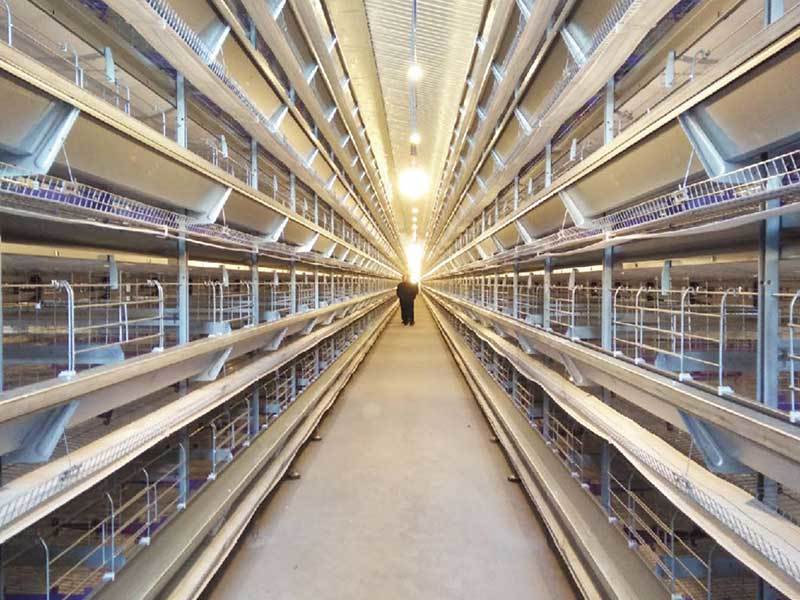Automatic Layer Cages for Commercial Egg Farming
Introduction
The poultry industry has undergone significant advancements over the past few decades, particularly in egg production. One of the most transformative innovations is the adoption of automatic layer cages in commercial egg farming. These systems enhance efficiency, improve bird welfare, and optimize space utilization while reducing labor costs. This article explores the design, benefits, challenges, and future trends of automatic layer cages in modern egg production.
---
1. Structure and Design of Automatic Layer Cages
Automatic layer cages are engineered to maximize productivity while ensuring the health and comfort of laying hens. Key components include:
1.1 Cage Configuration
- Multi-tier systems: Most commercial farms use battery cages arranged in 3 to 6 tiers to optimize vertical space.
- Sloped floors: Designed to allow eggs to roll gently onto collection belts, minimizing breakage.
- Nipple drinkers and automated feeders: Ensure consistent access to water and feed.
1.2 Material and Durability
- Galvanized steel: Resistant to corrosion and easy to clean.
- Plastic-coated wire mesh: Prevents foot injuries and improves hen comfort.
1.3 Automation Features
- Egg collection belts: Transport eggs automatically to a central collection point.
- Manure removal systems: Conveyor belts or scrapers remove waste, reducing ammonia levels.
- Climate control integration: Sensors adjust ventilation, temperature, and humidity.
---
2. Advantages of Automatic Layer Cages
2.1 Increased Productivity
- Higher stocking density allows more hens per square meter.
- Automated systems reduce labor costs by up to 50% compared to manual systems.
- Consistent egg collection minimizes losses due to breakage or contamination.
2.2 Improved Bird Welfare (Compared to Conventional Cages)
- Better hygiene due to automated manure removal.
- Reduced stress from human handling during feeding and egg collection.
- Some designs include enriched cages with perches and nesting areas.
2.3 Disease Control and Biosecurity
- Separation of birds from manure reduces parasite and bacterial infections.
- Enclosed systems limit exposure to wild birds and rodents.
2.4 Environmental Benefits
- Efficient feed utilization lowers waste.
- Manure can be collected for composting or biogas production.
---
3. Challenges and Concerns
3.1 High Initial Investment
- Automatic systems require significant capital for installation and maintenance.
- Small-scale farmers may struggle with affordability.
3.2 Ethical and Welfare Concerns
- Critics argue that even automated cages restrict natural behaviors (e.g., dust bathing, foraging).
- Some regions (e.g., the EU) are phasing out conventional cages in favor of free-range or aviary systems.
3.3 Technical Issues
- Power outages can disrupt automated feeding and egg collection.
- Regular maintenance is essential to prevent mechanical failures.
---
4. Future Trends in Automatic Layer Cages
4.1 Smart Farming Integration
- IoT sensors monitor hen health, egg quality, and environmental conditions in real time.
- AI-driven analytics optimize feed efficiency and predict disease outbreaks.
4.2 Welfare-Oriented Designs
- Enriched colony cages with more space and behavioral enrichment.
- Hybrid systems combining cage and free-range elements.
4.3 Sustainable Practices
- Solar-powered automation to reduce energy costs.
- Improved manure recycling systems for zero-waste farming.
---
Conclusion
Automatic layer cages represent a major leap forward in commercial egg farming, offering unparalleled efficiency and scalability. While challenges remain—particularly regarding animal welfare and upfront costs—ongoing innovations promise to make these systems even more sustainable and ethical. As consumer demand for ethically produced eggs grows, the industry must balance automation with welfare improvements to ensure long-term viability.
By embracing technology and addressing welfare concerns, automatic layer cages will continue to play a crucial role in meeting global egg demand efficiently and responsibly.
(Word count: ~2000)

 Catalogue
Catalogue








 Whatsapp
Whatsapp Telefon
Telefon
Izoh
(0)